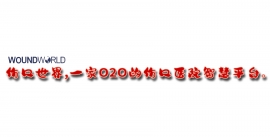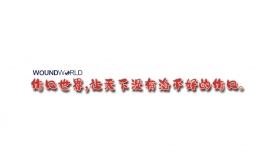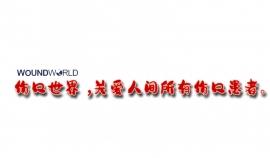文献精选
Nazli Parast, Pamela Walsh
This article presents a quality improvement study focused on developing a health literacy assessment tool for certified diabetes educators in Canada to use during virtual consultations with people diagnosed with type 2 diabetes. The study aims to improve healthcare professionals’ understanding of their patients’ health literacy levels in order to provide tailored education and support for diabetes self-management. It explores the prevalence and management of diabetes, the role of health literacy and education in diabetes management, and the significance of the study. The research questions address the effectiveness and practicality of existing health literacy tools in virtual consultations, the potential for improvement or development of a new tool, and the implications for patient-centred care in diabetes education. The article emphasises the importance of assessing health literacy in virtual consultations to ensure effective diabetes management and better outcomes for individuals living with the condition.
Citation: Parast N, Walsh P (2023) Empowering diabetes selfmanagement: A qualitative study on developing and evaluating health literacy tools for virtual consultations with certified diabetes educators. Journal of Diabetes Nursing 27: JDN311
Article points
1. A study was conducted to develop a tool to assess during virtual consultations the health literacy of people with type 2 diabetes.
2. For healthcare professionals to provide effective diabetes education, it is essential that an understanding of an individual’s health literacy is gained.
3. Through a quality improvement approach, participating certified diabetes educators helped to develop a new tool with the potential to help ensure effective self-management and improved outcomes.
Key words
- Certified diabetes educators
- Health literacy tools
- Type 2 diabetes
Authors
Nazli Parast, Advanced Practice
Nurse and Diabetes
Nurse Educator, and Pamela
Walsh, Associate Professor,
Athabasca University, Athabasca,
Alberta, Canada.
A pre-specified secondary analysis of the DELIVER randomised controlled trial in 5788 people with heart failure with mildly reduced or preserved ejection fraction, with or without type 2 diabetes, explored the implications of early eGFR changes after initiation of dapagliflozin on later cardiovascular and renal risk. As expected, from baseline to 1 month, eGFR declines of >10% were more common in those actively treated with dapagliflozin than in those treated with placebo, occurring in 40% versus 25%. In placebo recipients, experiencing an initial eGFR reduction of >10% was associated with a higher risk of major adverse cardiovascular events. However, in those treated with dapagliflozin, although an initial eGFR reduction of >10% was common, this was not associated with adverse cardiovascular or renal outcomes compared to those treated with dapagliflozin who experienced smaller initial reductions in eGFR. The authors concluded that these findings reinforce the advice, based on earlier studies in those at high risk of cardiorenal disease, that SGLT2 inhibitors need not usually be discontinued or interrupted in response to an initial eGFR reduction. Other studies and editorials have concluded that routine monitoring of renal function is not required after initiating SGLT2 inhibitors unless volume depletion is considered a risk.
Pam Brown
GP in Swansea
Citation: Brown P (2023) Diabetes
Distilled: DELIVERing reassurance that early eGFR reductions with SGLT2 inhibitors should not prompt drug discontinuation. Diabetes & Primary Care 25: 205–7
Deborah Christie
Professor of Paediatric and Adolescent Psychology, University College London Hospitals and Dartford and Gravesham NHS Trusts
Citation: Christie D (2023) Q&A: Breaking the cycle – Empowering healthcare professionals to overcome stigma in diabetes care. Diabetes & Primary Care 25: 183–6 Q&A
Article disclosure: This article describes research commissioned by Abbott, and Professor Christie was paid a fee by Abbott to contribute to this article. The views expressed are those of the author and not necessarily those of Abbott. The article was commissioned by the Editorial Board as a topic of interest. The journal has received no funding, and all peer review and editorial decisions have been made independently and according to the journal’s usual procedures.
Citation: Christie D (2023) Q&A: Breaking the cycle – Empowering healthcare professionals to overcome stigma in diabetes care. Diabetes & Primary Care 25: 183–6
Background: Chronic wounds fail to progress through a normal sequence of repair. This study aimed to evaluate the chronic wound patient journey among healthcare professionals (HCPs) and patients in Indian settings.
Methods: A survey questionnaire was framed, including patient burden, initial diagnosis and treatment preference, referral pathway, challenges, and unmet needs of HCPs and patients.
Results: A total of 100 HCPs and 30 patients participated in the survey. The primary challenges faced by the patients include high treatment costs and accessibility to healthcare centres while HCPs reported high treatment cost and lack of awareness as challenges. Affordable treatment options and lack of awareness were cited as prime unmet needs by both HCPs and patients.
Conclusion: The use of adapted products and early initiation of treatment can aid in faster wound healing and can be cost-effective.
Authors:
Arun Bal, Sanjay Vaidya, Rajiv Parakh, Vivekanand, Pavan Belehalli, Madhu Periasamy, Jessy Thomas, Bharat Kotru, Beulah Priyadharshini D R, Venugopal K and Pratik Bhide
Arun Bal is Consultant Diabetic Foot Surgeon, S L Raheja Hospital, Mumbai, India;
Sanjay Vaidya is Consultant Plastic Surgeon, S L Raheja Hospital, Mumbai, India;
Rajiv Parakh is Consultant– Peripheral Vascular and Endovascular Surgery, Medanta Hospital, Gurugram, India;
Vivekanand is Consultant Vascular Surgeon, BMJ Hospital, Bangalore, India;
Pavan Belehalli is Orthopaedic Surgeon, KIER, Bangalore, India;
Madhu Periasamy is Consultant Plastic Surgeon, Ganga Hospital, Coimbatore, India;
Jessy Thomas is Surgeon – Podiatry, Hiranandani Hospital, Mumbai, India;
Bharat Kotru is Podiatrist and Wound Care Specialist, Max Hospital and Amandeep Hospital, Amritsar, India;
Beulah Priyadharshini D R is Medical Affairs Manager – India, Urgo Medical;
Venugopal K is Medical Affairs & Training Specialist – India, Urgo Medical;
Pratik Bhide is Managing Director, India, Urgo Medical




